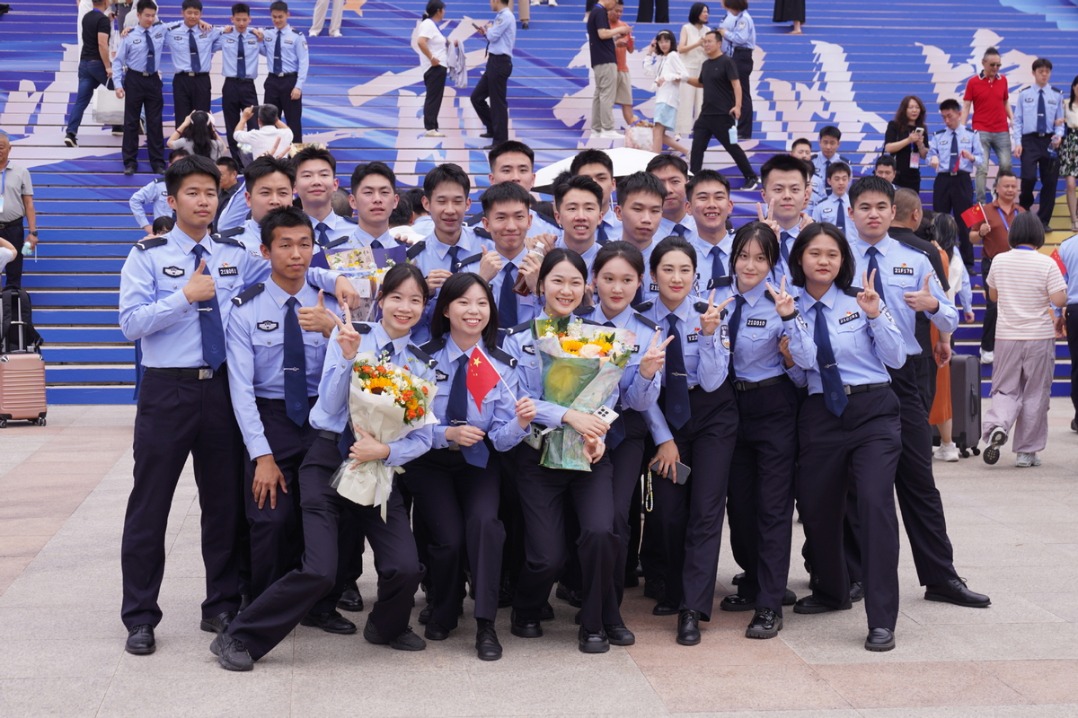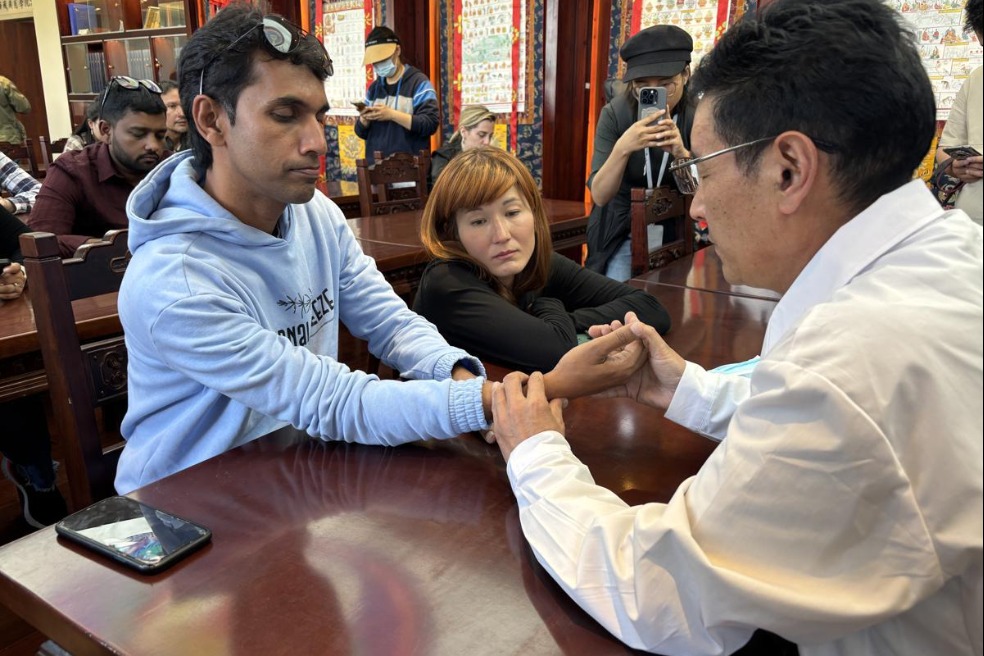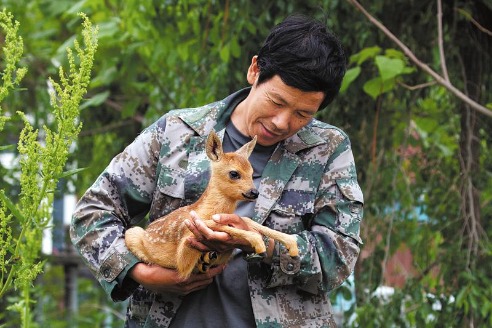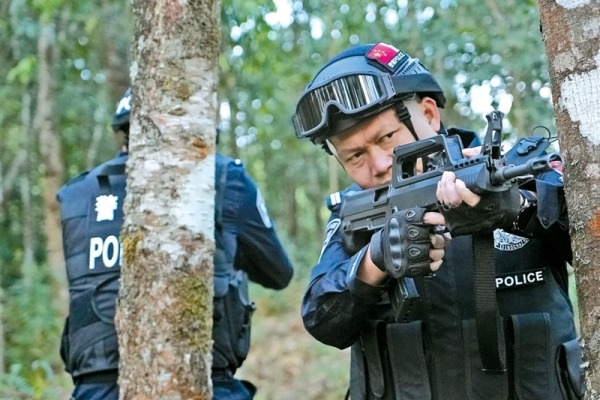Scientists push for breakthroughs

President's mention of cutting-edge satellite stokes pride among researchers
 |
Scientists work on China's first quantum science satellite at a research center of the Chinese Academy of Sciences in Shanghai in May last year. [Photo/Xinhua] |
On the morning of Oct 18, around 100 Party members who are faculty and students from the University of Science and Technology of China gathered in the meeting room at the Hefei National Laboratory for Physical Sciences at the Microscale to watch the live broadcast of the 19th National Congress of the Communist Party of China.
Outside the meeting room was a model of the Micius quantum science satellite, which was launched on Aug 16, 2016. The satellite, named after the ancient Chinese scientist and philosopher Micius, or Mozi, was the world's first quantum science satellite.
The gathering at the laboratory was merely one of more than a dozen such gatherings at the university watching the live broadcast.
Several minutes after General Secretary Xi Jinping started to deliver his report, the quantum satellite was mentioned as one of the major scientific breakthroughs achieved by the country since 2012 when the 18th National Congress of the CPC was convened.
Pride was noticed among the people who were watching the live broadcast in the meeting room.
"Though the quantum satellite has appeared many times in news headlines over the last year, it was a great honor for our USTC scientists that it could be mentioned in Xi's report," said Wang Xilin, a scientist from the laboratory's division of quantum physics and quantum information, after watching the broadcast.
Wang, 33, a member of the team led by Pan Jianwei, vice-president of USTC and academician of the Chinese Academy of Sciences, said it has been a great honor for him to participate in the university's fruitful research on quantum physics and quantum communication.
Encouraged by Xi's mentioning the quantum satellite in his report, Wang said the USTC scientists will continue to strive for breakthroughs.
"Quantum physics is a broad scientific scope that includes many specific areas. Chinese scientists have been world leaders in some of the areas, while in other areas we are still not the best," said Wang, adding that he hopes for more breakthroughs by the USTC scientists in the next five years.
Liu Mei, a doctorate candidate working with the USTC-based laboratory, said after watching the broadcast that she was greatly encouraged by the multiple major scientific breakthroughs mentioned in Xi's report.
"Doing better scientific research is what I can do to serve the country and I will stay true to my mission", said Liu, 27, who joined the Party five years ago.
Thanks to the USTC team's years of efforts, China has taken a huge step toward building a space-based quantum communication network that would be virtually uncrackable.
Since the launch of the 640-kilogram satellite, it has been serving multiple scientific purposes, including testing the technology that distributes quantum keys, which can be used to encrypt or decrypt data, between ground and space.
With the satellite, China has become the first country in the world to establish photon entanglement at a distance of more than 1,200 kilometers between ground and space, paving the way for ultrasecure, long-distance quantum communication.
The world's first 2,000-km quantum communication line went into formal operation in September, and it will serve as the backbone connecting Beijing and Shanghai. The backbone also passes by Jinan in Shandong province and Hefei in Anhui province, Pan said.
In a report by Xinhua News Agency on Thursday, Xu Wu, Party chief of USTC and a delegate to the 19th National Congress of the CPC, said the Chinese scientists will soon make a new breakthrough in quantum communication.
Due to the attenuation of optical fiber, relay stations are needed to extend the distance of quantum communication. There are more than 30 relay stations on the Beijing-Shanghai line, with an average distance of about 80 km between them, according to the Xinhua report.
The research team led by Pan is working to extend the distance between two stations to between 300 km and 500 km to cut the number of relay stations and the overall cost, Xu said.
USTC was established by the Chinese Academy of Sciences in 1958 in Beijing and moved to Hefei, capital of Anhui province, in 1970. It was established as a strategic action by the country's top authorities to meet China's science and technology needs and increase the country's international competitiveness.
Since its establishment, the university's motto has been "politically sound and professionally competent."
- Relief efforts underway in flood-hit county
- Summer months transform Tianjin's Qilihai Wetland into an ecological showcase
- Linyi meets RCEP: Connecting regional markets, sharing global goods
- Students from both sides of Taiwan Strait compete in a friendly dragon boat race
- China activates emergency response to flooding in 3 provincial-level regions
- China strengthens animal-attack regulations with updated law





































